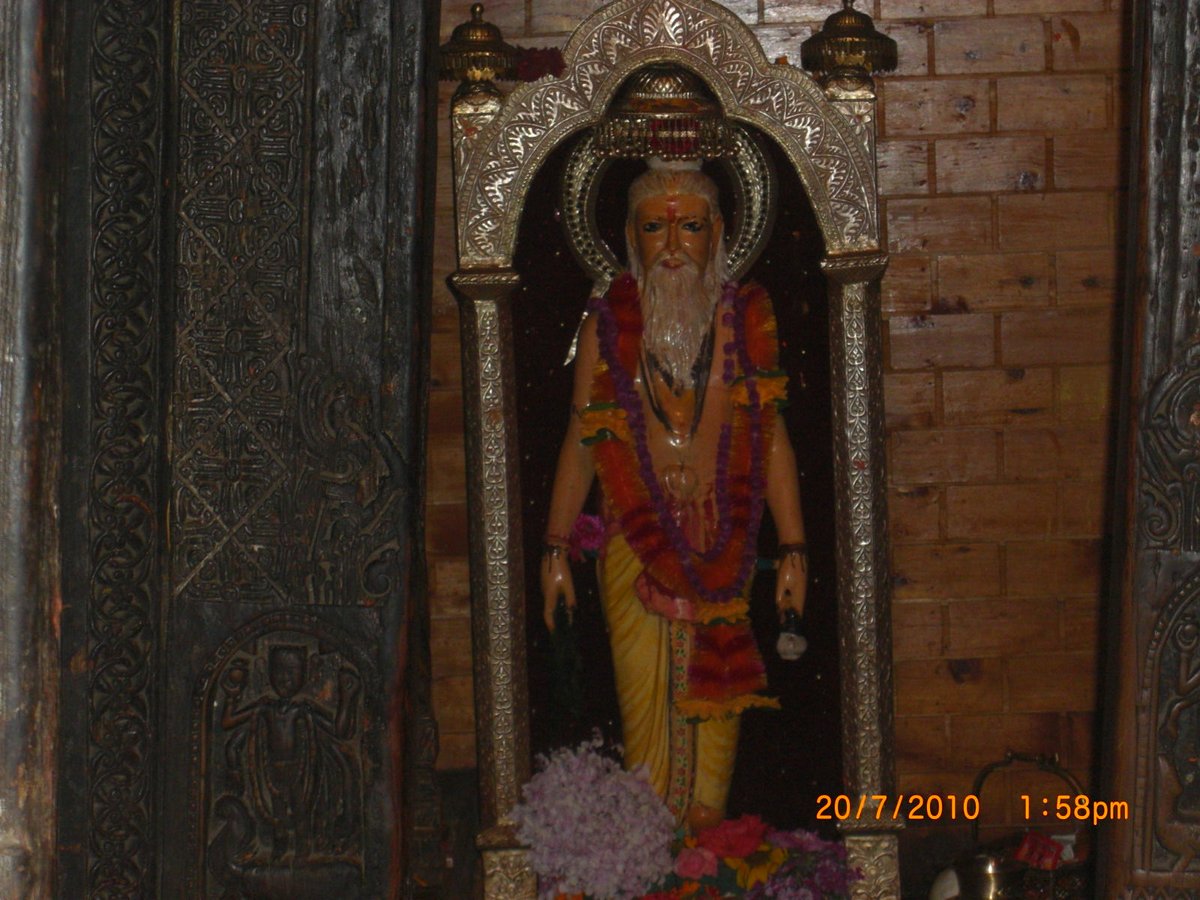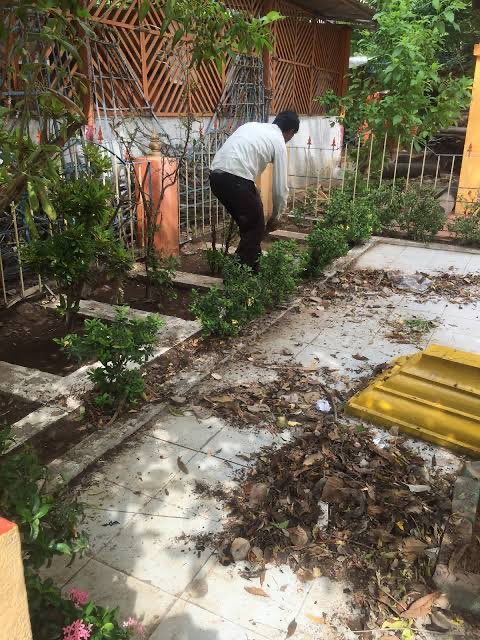
#Parasara_Maharishi
#Temple_For_Parashara_Maharishi
#Parashar_Lake in Himachal Pradesh
Parashara is a Rigvedic Maharishi and author of many ancient Indian texts such as Parashara Smriti and Parashara Samhita, Vishnu Purana. He was the grandson of Vasishta, the son of Shanta-Muni


#Temple_For_Parashara_Maharishi
#Parashar_Lake in Himachal Pradesh
Parashara is a Rigvedic Maharishi and author of many ancient Indian texts such as Parashara Smriti and Parashara Samhita, Vishnu Purana. He was the grandson of Vasishta, the son of Shanta-Muni



and the father of Vyasa. Parashara Muni was raised by his grandfather, Vasishta, because he lost his father at an early age. His father, Shakti-muni, was on a journey and came across an angry Rakshasa (demon) who had once been a king but was turned into a demon feeding on human
flesh as a curse from Vishwamitra. The demon devoured Parashara’s father. When Parāśara's father, Sakti Maharishi died after being devoured by the demon along with Vasishta’s other sons, Vashista resorted to ending his life by suicide. Hence he jumped from Mount Meru but landed
on soft cotton, he entered a forest fire only to remain unharmed, then he jumped into the ocean who saved him by casting him ashore. Then he jumped in the overflowing river Vipasa, which also left him ashore. Then he jumped into the river Haimavat, which fled in several
directions from his fear and was named Satadru. Then when he returned to his asylum, he saw his daughter-in-law pregnant. When a son was born he acted as his father and hence forgot completely about destroying his life. Hence, the child was named #Parāśara which meant enlivener
of the dead. In the Vishnu Purana, Parāśara speaks about his anger from his father being devoured by a Rakshasa thus:
Violent anger seized me and I commenced a sacrifice for the destruction of the Rākṣasas. Hundreds of them were reduced to ashes by the rite, when, as they were
Violent anger seized me and I commenced a sacrifice for the destruction of the Rākṣasas. Hundreds of them were reduced to ashes by the rite, when, as they were
about to be entirely exterminated, my grandfather Vasishta said to me: Enough, let your wrath be appeased. The Rākṣasas are not culpable. Your father's death was the work of destiny. Anger, my son, is the destruction of all that man obtains by arduous exertions, of fame and of
devout austerities and prevents the attainment of heaven or of emancipation. Let no more of these unoffending spirits of darkness be consumed. Mercy is the might of the righteous.
Parāśara Muni once halted for a night in a little hamlet on the banks of the river Yamuna. He was
Parāśara Muni once halted for a night in a little hamlet on the banks of the river Yamuna. He was
put up in the house of the fisherman-chieftain Dasharaj. When dawn broke, the chief asked his daughter, Matsyagandha, whose name means "one with the smell of fish", to ferry the sage to his next destination. When in the ferry, Parāśara was attracted by the beautiful girl and
asked her to fulfill his desire of giving a son to her. Matsyagandha refused fearing the other people and sages who were standing on the bank of river at the other side. He then created an island within the river by his mystic potency and asked her to land the boat there. On
reaching the other side, the sage once again chanted the mantra to make her pregnant, but she declared that her body stank and Parāśara granted her the boon that the finest fragrance may emit from her person. She was thereafter known as Satyavati (pure fragrance). Then, she
insisted that the act of getting a child was not appropriate in broad daylight, as her father and others would see them from the other bank; they should wait till night. The sage, with his powers, shrouded the entire area in fog. Before Parāśara gave her a child, Satyavati again
interrupted him to say that he would enjoy his child and depart, leaving her shamed in society. She asked Parāśara to promise her that the childbirth would be a secret and her secret intact, the son born from their union would be as famous as the great sage, and her fragrance and
youth would be eternal. Parāśara granted her these wishes and was satiated by the beautiful Satyavati. Parāśara then gave her a child who was a son called #Krishna_Dvaipāyana was born, who was dark-complexioned and hence may be called by the name Krishna (black) and also the name
Dwaipayana, meaning 'island-born'. He later compiled the classic Vedic literatures of India, and so is called #Vyasa who is the 17th incarnation of Lord Vishnu. Leaving Satyavati, Parāśara proceeded to perform Tapas. Vyasa also became a Rishi and while parting, Parasara granted
Satyavati another boon, that she may have her lost virginity back. Satyavati returned to her father's house and in due course, married Śantanu.
The three storied pagoda type temple is built in the 13th century with wood carving structures around it. There is a statue of the
The three storied pagoda type temple is built in the 13th century with wood carving structures around it. There is a statue of the

Great sage Parashar inside.
The Parashar lake is located at a distance of 50 KM from Bajaura. It is almost same distance from Mandi side. This place is at a distance of 10 KM from Bhuntar airport. From Bajaura a right side road goes to Parashar Lake. From this point the road is
The Parashar lake is located at a distance of 50 KM from Bajaura. It is almost same distance from Mandi side. This place is at a distance of 10 KM from Bhuntar airport. From Bajaura a right side road goes to Parashar Lake. From this point the road is

narrow but well maintained. The road passes through hills with big pine trees on both sides. Snow capped mountains of Manali will be visible throughout if weather is clear. One can go around the lake and do a parikrama (walking around). There is a wire fence throughout the lake. 

During June 2nd week a three day festival is organized here. Parashar lake in winter appears like this. A peculiar thing about the lake, located at a height of 2730 metres, is a little floating island that keeps moving and changing its position at regular intervals. Similar to 

most of the mountain lakes, it is also fed by rainwater and glacier. A legend has it that the lake was created by the Pandavas while returning after the battle, Mahabharata.
Distance (From Mandi): 51 Kms
Trip Duration (Including Travel): Half Day to Full Day
Place Location:
Distance (From Mandi): 51 Kms
Trip Duration (Including Travel): Half Day to Full Day
Place Location:
Near Bagi Village
Transportation Options: Bus / Cab / Walk/Trek
Travel Tips: This place has road facility along with two trekking trails.
Sarvam Sri Krishnarpanam 🙏🏻
Transportation Options: Bus / Cab / Walk/Trek
Travel Tips: This place has road facility along with two trekking trails.
Sarvam Sri Krishnarpanam 🙏🏻

• • •
Missing some Tweet in this thread? You can try to
force a refresh























